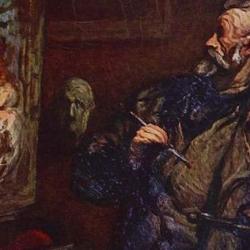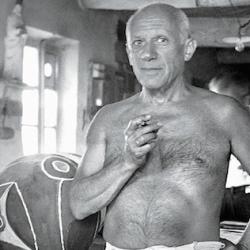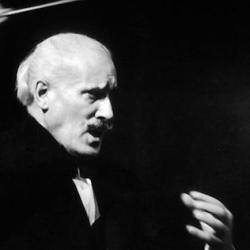David Luy has a helpful article in the April 2011 issue of the International Journal of Systematic Theology , where he summarizes how von Balthasar harmonizes his Trinitarian theology with his claim that Christ, especially in the cross, is the “form” of God’s glory and beauty. he claims that God’s self-disclosure in creation must be understood in terms of an aesthetic relation between God and the world, and that this linkage depends on three “tethers” that all have to remain intact – the divine splendour itself, creation and finite freedom, and the modality of post-lapsarian negative distance. Here I hit a few high points of Luy’s presentation.
According to von Balthasar, the incarnation expresses and reveals the inner life of God rather than hiding or obscuring it.
God’s inner Trinitarian life is kenotic: The Father empties Himself for the Son, the Son for the Father, both do this in the Spirit. This means that the “emptying” of the incarnation is not alien to God, but an expression of His eternal Triune nature. Indeed, within the Triune fellowship, we can even speak of “distance,” insofar as the Son and Father, though equally God, are absolutely distinct. The Son never smudges over into the Father, nor the Father into the Son. Thus, even the “distance” between Father and Son in the incarnation is not an alienation from God’s nature, but an expression within created reality of the eternal “distance” between Father and Son.
Creation can have its own integrity, its own relative autonomy, because of the distance that exists within the triune life. God has within Himself space for otherness, and this makes it possible for Him to create a world other than Himself without alienation from Himself and without making the world an extension of His own being. This distance becomes a negative distance in a world of sin: “for Balthasar, every sin is a modality of kenotic space, albeit a modality that has been perverted and ‘twisted’ by the senseless evil of humanity’s misdirected freedom.”
The cross is a “translation” of the kenosis and distance of divine life into the “language” of a fallen world. At the cross, the Triune God “intersects” with the fallen world, yet in that intersection displays and communicates Himself and His glory. God’ beauty is not overwhelmed by the cross. Rather, He displays glory in the shame of the cross, beauty in the ugliness of an execution, to overcome the shame, sin, and ugliness. There is an aesthetic “collision” in the cross, but not one that hides God: “In the form of the crucified Christ,” Luy says, “we see a genuine modality of God’s being in the context of sinful negativity.”
Though the cross is a moment in the mutual glorification of Father and Son, it is an inescapable moment. The resurrection doesn’t restore “classical” beauty. The resurrection is the beauty of new creation that has passed through the cross. Negative distance is overcome as sinner are caught up into the positive distance of participation in God’s life.
Luy argues that showing how Balthasar handles the aesthetic collision constitutes a defense of Balthasar against common charges that he blurs the distinctions of immanent and economic Trinity, God and world. Luy concludes that the passages used to support such claims are “better interpreted in terms of an intensifying corresponding leading to a supreme aesthetic collision – a framework that preserves the integrity of both God and the world even as they are brought into real and meaningful intersection with one another. This interpretation opens up important dimensions of Balthasar’s narration of the cross-event, and explains in what sense he upholds the profound beauty of the crucified Christ . . . . The cross is . . . beautiful because it represents the climax of God’s engagement with the world, and the fullest expression of his being in the theater of creation.”











